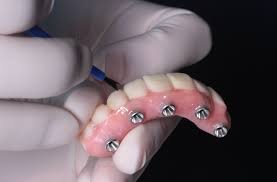
Hearing Loss
Hearing loss is a common medical condition that affects millions of individuals worldwide, interfering with their ability to perceive sound and communicate effectively. It can arise due to a variety of causes ranging from age-related degeneration to infections, trauma, or congenital conditions. In the medical world, accurate diagnosis and documentation are essential, not only for treatment but also for administrative processes like insurance billing and statistical tracking. The International Classification of Diseases, 10th Revision (ICD-10), is a global system maintained by the World Health Organization (WHO) that standardizes codes for diseases and health conditions. This system includes specific codes for different types and causes of hearing loss, allowing healthcare professionals to accurately categorize and report each case.
Types of Hearing Loss
There are several types of hearing loss, and understanding them is crucial for appropriate ICD-10 coding. The main types include conductive hearing loss, sensorineural hearing loss, mixed hearing loss, and central auditory processing disorders. Conductive hearing loss occurs when there is a problem conducting sound waves through the outer ear, tympanic membrane, or middle ear. This type of hearing loss is often caused by infections, fluid in the middle ear, earwax buildup, or abnormalities in the ear structure. Sensorineural hearing loss, on the other hand, results from damage to the inner ear (cochlea) or the auditory nerve. It is commonly caused by aging (presbycusis), noise exposure, ototoxic drugs, or genetic factors. Mixed hearing loss is a combination of both conductive and sensorineural components. Lastly, central auditory processing disorders involve difficulties in the brain’s ability to interpret sounds, even when hearing ability is normal. These distinctions are vital because each category has corresponding ICD-10 codes that must be applied correctly during medical documentation.
ICD-10 Code Structure and Importance
ICD-10 codes are alphanumeric codes that consist of a letter followed by numbers. They serve multiple purposes: enabling standardized disease tracking, supporting health insurance claims, facilitating clinical research, and assisting in healthcare planning and resource allocation. The codes are highly detailed, allowing clinicians to document not just the presence of hearing loss but its specific type, laterality (right ear, left ear, bilateral, or unspecified), and cause. For example, a sensorineural hearing loss in the right ear has a different ICD-10 code than bilateral conductive hearing loss. This granularity ensures that medical records are precise, which benefits patient care and administrative accuracy.
Common ICD-10 Codes for Hearing Loss
Several ICD-10 codes are frequently used in the diagnosis of hearing loss. Each code corresponds to a specific type of hearing impairment. The most commonly used categories include H90 (Conductive and sensorineural hearing loss) and H91 (Other hearing loss). Within these categories are subcodes that provide further specificity. For instance, H90.0 refers to bilateral conductive hearing loss, while H90.1 is for unilateral conductive hearing loss, with or without mention of the other ear. H90.3 refers to bilateral sensorineural hearing loss, and H90.4 is used for unilateral sensorineural hearing loss. Mixed hearing loss has its own set of codes such as H90.6 for bilateral and H90.7 for unilateral cases. Codes under H91 cover other types of hearing loss, such as sudden idiopathic hearing loss (H91.2), auditory processing disorders (H93.25), and unspecified hearing loss (H91.9). These codes are used when the hearing loss does not clearly fall into the conductive or sensorineural categories or when it is due to less common causes.
Coding Laterality in Hearing Loss
Laterality is a critical factor in the classification of hearing loss under ICD-10. Each diagnosis should specify whether the hearing loss affects the right ear, left ear, both ears, or if the laterality is unknown. This is not only important for treatment purposes but also for statistical and administrative accuracy. For example, H90.41 denotes sensorineural hearing loss, unilateral, right ear, whereas H90.42 indicates the same condition in the left ear. Similarly, H90.5 refers to unspecified sensorineural hearing loss, without mention of laterality. Coders must ensure that they reference the correct side and form of hearing loss as documented in the medical record. Mistakes in laterality can lead to issues in insurance claims, incorrect data reporting, and potential legal complications.
Pediatric vs Adult Hearing Loss
The diagnosis and coding of hearing loss in children can differ significantly from those in adults. Pediatric hearing loss often involves congenital conditions, developmental delays, or complications from infections like meningitis. In such cases, additional codes may be used to describe the underlying condition or contributing factors. For example, congenital hearing loss is coded under Q16, which includes congenital malformations of the ear causing hearing impairment. In contrast, adult hearing loss is more likely to be acquired and may be associated with occupational noise exposure, aging, or chronic diseases such as diabetes. Accurate documentation of the patient’s age, onset of hearing loss, and potential etiologies is essential for appropriate coding. The inclusion of associated conditions or symptoms, such as tinnitus or vertigo, may also influence code selection.
Sudden and Progressive Hearing Loss
Another important distinction in hearing loss is whether it is sudden or progressive. Sudden hearing loss is typically an emergency that requires immediate medical attention and may be reversible if treated promptly. It is often idiopathic but can also be related to viral infections, vascular events, or trauma. The ICD-10 code H91.2 is used for sudden idiopathic hearing loss. Progressive hearing loss, on the other hand, develops gradually over time and is usually permanent. It may result from aging, prolonged noise exposure, or chronic otitis media. Progressive forms are typically coded under H90, depending on the type and laterality. Properly distinguishing between sudden and progressive onset helps guide treatment decisions and improves the specificity of medical records.
Tinnitus and Other Related Conditions
Hearing loss often coexists with other auditory symptoms, most notably tinnitus, which is the perception of noise or ringing in the ears in the absence of external sound. While tinnitus is not a form of hearing loss per se, it frequently accompanies sensorineural loss, particularly in cases of noise-induced hearing damage or age-related hearing deterioration. The ICD-10 code for tinnitus is H93.1, which includes various subcodes to specify whether the tinnitus is in the right ear, left ear, bilateral, or unspecified. Including these related symptoms in the diagnosis can affect both treatment and insurance coverage. For example, patients with debilitating tinnitus may be eligible for specific therapies or hearing aids with masking features. Other coexisting conditions might include balance disorders, vertigo (coded under R42), or otalgia (ear pain, coded under H92.0). Accurately coding all relevant symptoms ensures comprehensive patient care.
Challenges in Hearing Loss Diagnosis and Coding
Despite the detailed framework provided by ICD-10, diagnosing and coding hearing loss can still be challenging. One of the main issues is incomplete documentation in the patient’s medical record. For example, if the physician fails to specify the type or laterality of hearing loss, coders may be forced to use unspecified codes, which are less informative and may result in denied insurance claims. Moreover, the overlap of symptoms and conditions can complicate the diagnostic process. A patient might present with hearing loss and vertigo, which could suggest Meniere’s disease (coded under H81.0), but further evaluation is required to confirm the diagnosis. In such cases, collaboration between audiologists, ENT specialists, and coders becomes essential. Another challenge lies in keeping up with updates to the ICD coding system and ensuring accurate use of the most current codes.
The Role of Audiometry and Diagnostic Tools
Proper diagnosis and coding of hearing loss heavily depend on audiometric testing and other diagnostic tools. Audiometry helps quantify the degree and type of hearing loss and is critical for distinguishing between conductive and sensorineural components. Pure-tone audiometry, speech audiometry, tympanometry, and otoacoustic emissions are commonly used tests. The results of these tests are essential for selecting the most accurate ICD-10 codes. For instance, if audiometric data confirm bilateral sensorineural hearing loss, the coder can confidently assign code H90.3. Diagnostic imaging such as MRI or CT scans may also be used to detect structural abnormalities, tumors, or lesions affecting the auditory pathways. The integration of clinical findings, test results, and detailed physician documentation ensures that the coding accurately reflects the patient’s condition.
Impact of Accurate Coding on Patient Care and Healthcare Systems
Accurate ICD-10 coding of hearing loss has a direct impact on patient care, healthcare operations, and financial outcomes. From a clinical perspective, precise coding enables better tracking of patient outcomes, facilitates appropriate treatment planning, and supports continuity of care across multiple providers. Administratively, it aids in insurance claim processing and reimbursement. Errors in coding can result in delayed or denied claims, reduced revenue for healthcare facilities, and legal liability. On a broader scale, reliable data collection through ICD-10 codes supports epidemiological research, public health monitoring, and policy-making. It helps identify population trends, allocate healthcare resources effectively, and develop prevention strategies. For example, data showing high rates of occupational hearing loss in a particular industry can prompt regulatory action to improve workplace safety.
Conclusion
Hearing loss is a multifaceted condition that requires accurate diagnosis and detailed documentation for effective treatment and management. The ICD-10 coding system offers a structured framework to categorize the different types, causes, and characteristics of hearing loss. From specifying laterality and onset to identifying associated symptoms like tinnitus, each element plays a crucial role in the coding process. Proper application of ICD-10 codes ensures better patient care, supports administrative functions, and contributes to valuable healthcare data. As healthcare continues to evolve, the importance of precision in clinical documentation and coding will only grow, making it essential for medical professionals and coders to stay informed and diligent in their practices.






